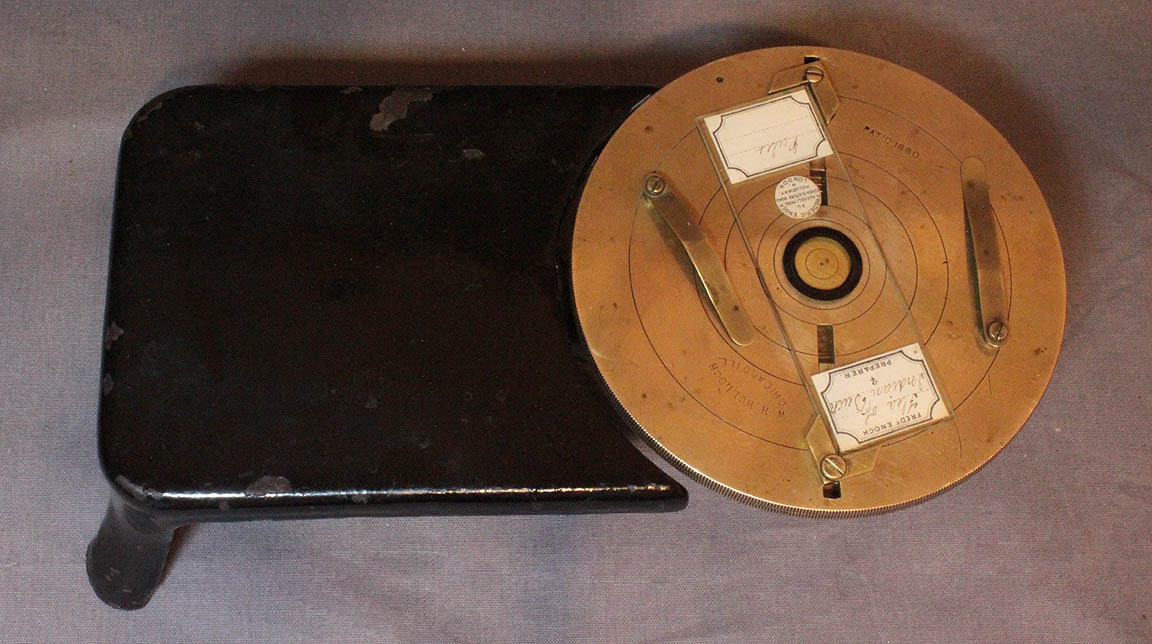MICROSCOPE-ANTIQUES.COM © 2013-21.
BULLOCH SLIDE-RINGING TURNTABLE
c. 1885
Author: Barry Sobel, MD with the assistance of James Soliday
Editor: Joseph Zeligs, MD
| DESCRIPTION | HISTORY |

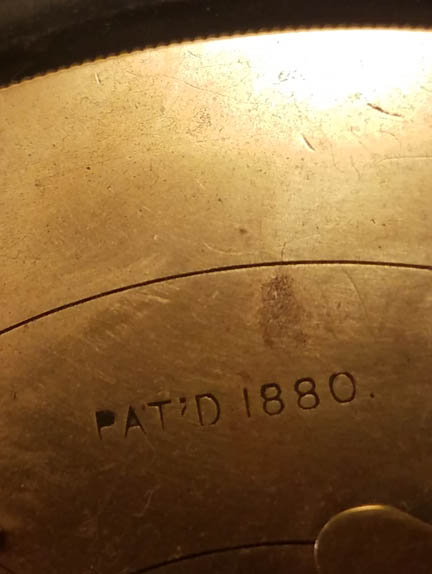 Signed on the brass turntable itself: 'W.H. BULLOCH, CHICAGO, ILL.' and also 'PAT'D 1880'. In use, the brass table is spinning. The user would employ a pointed paint brush, usually hand-held, to apply cement and/or sealant while the device was spinning. After the specimen is secured under the coverslip the table is used to to coat the edge of the coverslip with a sealant ringing compound such as asphaltum, or colored thick lacquer. These compounds are quite thick and so do not fly off due to the momentum of the spinning table. Occasional devices like this had a holder for the brush, but most depend on a the user's wrist being steadied on the stationary surface of the device. A video of this technique is shown here using a modern turntable(without an automatically centering mechanism). These turntables were also used for cutting small circles in thin glass(coverslips) with a diamond-tipped pencil, drawing smaller circles on a coverslip to draw attention to an area of interest, and, by building up several layers of sealant, producing a shallow
Signed on the brass turntable itself: 'W.H. BULLOCH, CHICAGO, ILL.' and also 'PAT'D 1880'. In use, the brass table is spinning. The user would employ a pointed paint brush, usually hand-held, to apply cement and/or sealant while the device was spinning. After the specimen is secured under the coverslip the table is used to to coat the edge of the coverslip with a sealant ringing compound such as asphaltum, or colored thick lacquer. These compounds are quite thick and so do not fly off due to the momentum of the spinning table. Occasional devices like this had a holder for the brush, but most depend on a the user's wrist being steadied on the stationary surface of the device. A video of this technique is shown here using a modern turntable(without an automatically centering mechanism). These turntables were also used for cutting small circles in thin glass(coverslips) with a diamond-tipped pencil, drawing smaller circles on a coverslip to draw attention to an area of interest, and, by building up several layers of sealant, producing a shallow cell
. Deep cells were usually made with a metal or glass cylinder cemented to the slide; these deeper cells still required sealant around the coverslip.
SLIDE HOLDING MECHANISM:,
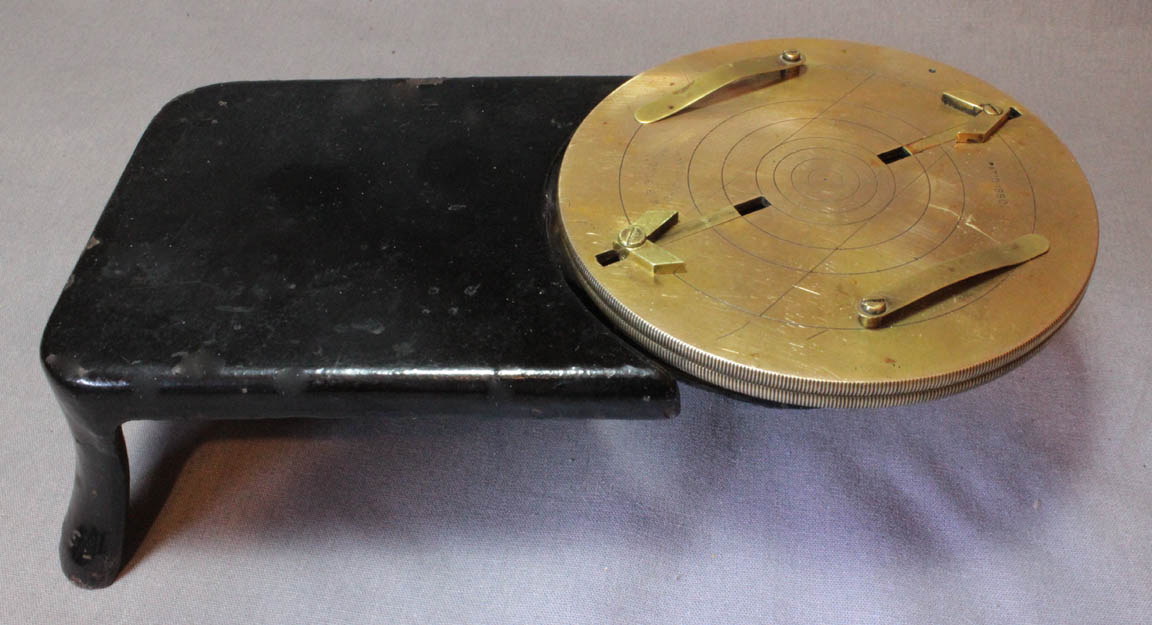
The device has two brass stage clips, and two L-shaped slide retainers to grasp diagonally opposite corners of a slide. Concentric rings are engraved on the table to assist in centering. There are two lines engraved on the table indicating how to attach the slide at an an angle between the two L-shaped holders. The bottom of each of the two L-shaped slide holders attaches to a small rectangular piece that slides in its slot on opposite sides of the top plate. The unusual mechanism allows one to center a slide easily.
SLIDE CENTERING MECHANISM: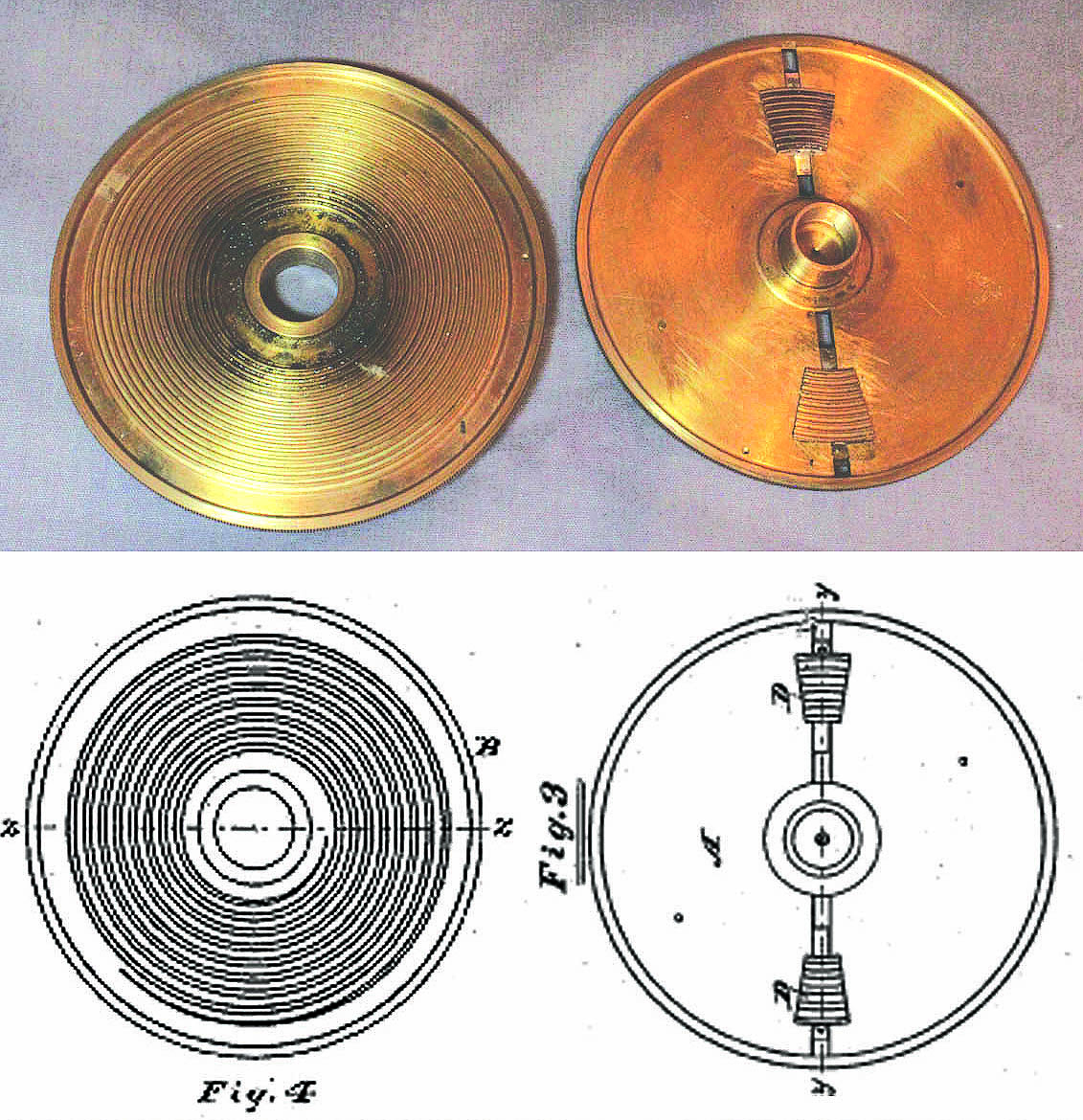
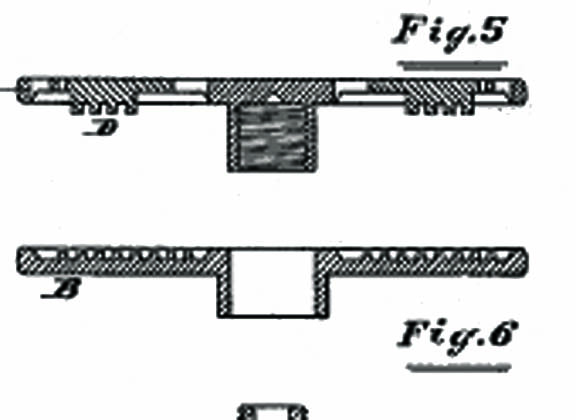
Each of the rectangular pieces attached to the bottom of the L-shaped slide holders have pieces with curved teeth soldered to their bottom; these ride in grooves of a round plate bottom plate in an Archimedean spiral*. To center the slide, the L-shaped holders are first extended outward by moving the bottom plate clockwise until they are far enough apart to allow the slide to fit between them. Then the slide is aligned with the engraved lines. As the bottom plate is turned counterclockwise, and one holds the top place stationary, the spiral guides both L-shaped pieces towards the center of the table equally. In this way the slide is grasped by the holders, held in place and automatically centered. The slide clips can then be turned in on top of the slide to hold it more securely in this position. This mechanism works on the same principle used in the chuck of a self-centering metal-working lathe.
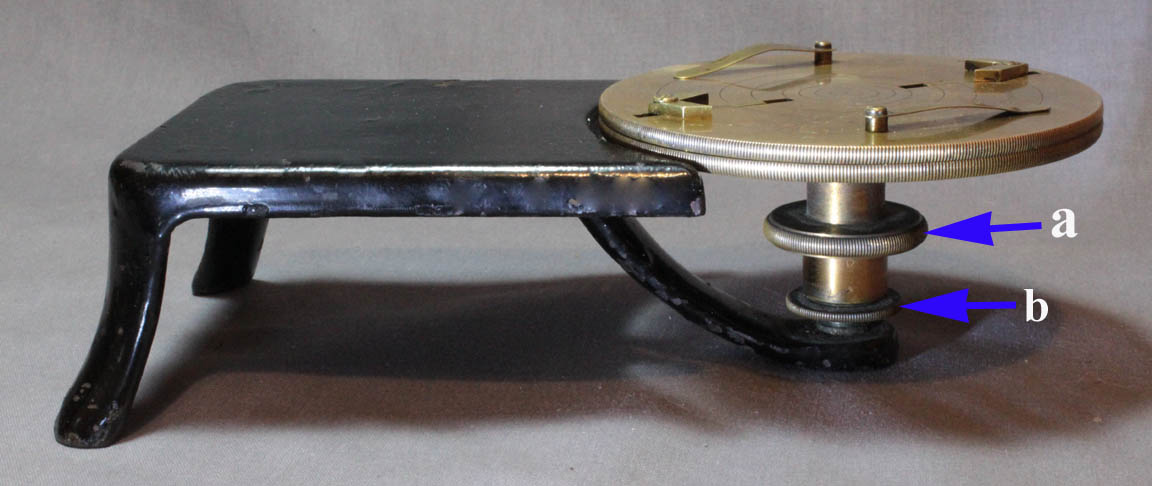
Under the plates there is a knob(a) which when turned clockwise, increases the tension of two plates against each other or when turned counterclockwise, reduces the tension; in this way one can adjust the mechanism for smooth operation. Below that knob is another knob(b) that regulates tension on the turntable rotation, and when fully tightened, holds the turntable in place.
HISTORY AND USAGE OF SLIDE RINGING TURNTABLES:
Please see the History Section of the article about the Aylward Concentric
model.
*Although the patent refers to a volute
spiral, this is technically incorrect as a volute spiral has steadily increasing space between the coils as they move outward, whereas in this turntable, as in lathe chucks, the spacing remains constant, a form described more accurately as an Archimedean spiral. The author is grateful to Paul Ferraglio for this information.
*Although the patent refers to a
volutespiral, this is technically incorrect as a volute spiral has steadily increasing space between the coils as they move outward, whereas in this turntable, as in lathe chucks, the spacing remains constant, a form described more accurately as an Archimedean spiral. The author is grateful to Paul Ferraglio for this information.
